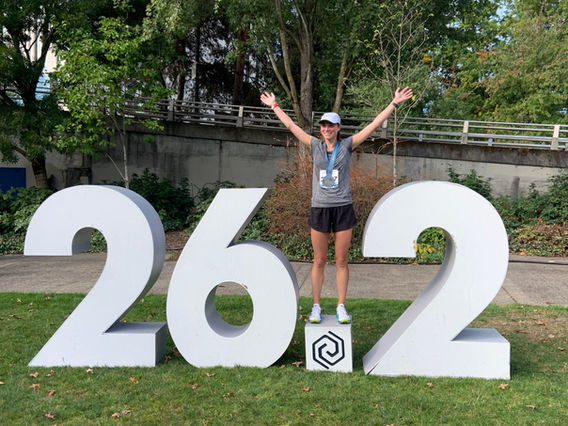If you’re new to running or triathlon, it can be intimidating to start a new exercise routine. But don’t worry – with a little bit of preparation and some basic tips, you can become a successful beginner runner!
From 0 to 26.2 – you’ve come a long way, Meg Lentz from Bend, Oregon! Congrats on conquering the marathon in Portland and proving that determination and a little bit of fun can take you the distance. #marathonfinisher #beginnerrunner #justkeeprunning”
One of the most important things for beginner runners to focus on is starting slowly and building up their distance over time. It’s important to listen to your body and not try to do too much too soon, as this can lead to burnout or injury.
It’s generally best to start by running by feel and taking walking breaks as needed. This allows you to listen to your body and not push yourself too hard, which can help prevent burnout or injury.
Heart rate monitor
That being said, using a heart rate monitor can be a useful tool to help you gauge your intensity and ensure that you’re not overdoing it. However, it’s important to remember that heart rate is just one factor to consider and it’s not the only indicator of how hard you’re working. If you decide to use a heart rate monitor, be sure to pay attention to other factors such as your breathing, perceived exertion, and overall comfort level.
It’s also a good idea to consult with a running or triathlon coach to determine what heart rate range is appropriate for you.
Stretching and strength training are important for beginner runners.
Stretching can help improve your flexibility and reduce your risk of injury, while strength training can help improve your running performance and reduce the risk of overuse injuries.
Strength training can help strengthen the soft tissues (such as muscles, tendons, and ligaments) of a runner. By placing stress on these tissues through various strength training exercises, you can improve their strength, flexibility, and overall resilience.
In particular, strength training can help runners in the following ways:
Improve muscle strength and endurance: Stronger muscles can help you run faster and longer, and they can also help reduce the risk of muscle strains and other injuries.
Enhance tendon and ligament strength: Tendons and ligaments are responsible for connecting your muscles to your bones, and strong tendons and ligaments can help improve your overall stability and movement efficiency.
Improve flexibility: Stretching and certain strength training exercises can help improve your flexibility, which can make your running stride more efficient and reduce the risk of injury.
Another important thing for beginner runners to focus on is finding a good route and the right gear. Whether you prefer running on a treadmill, a track, or a trail, it’s important to choose a surface that is safe, flat, and comfortable. I recommend to walk up steep pitches, which will help to keep intensity in check and safe energy.
Running shoes
And don’t forget to invest in a good pair of running shoes! If you struggle to find the right running shoe getting a running analysis can be a helpful, especially if you have specific needs or concerns.
Running Analysis
A running analysis typically involves a trained professional assessing your running gait and foot strike, as well as any other relevant factors such as your foot type, arch height, and overall running goals. Based on this analysis, the professional can recommend specific shoes that are well-suited to your needs.
For example, if you have flat feet or overpronate (roll inward excessively while running), you may need shoes with more support and stability.
On the other hand, if you have high arches or underpronate (supinate = roll outward excessively while running), you may need shoes with more cushioning and flexibility.
flat feet, overpronate–>support & stability shoes
supinate, underpronate–>neutral shoes which provide cushioning & flexiblity (including a wider toe box)
That being said, a running analysis is not strictly necessary in order to find the right running shoes. There are many other factors to consider, such as your budget, the type of running you’ll be doing, and your personal preferences. Ultimately, the most important thing is to find shoes that feel comfortable and supportive when you run.
Finally, don’t forget to have fun!
Running can be a great way to clear your mind, relieve stress, and boost your mood. So remember to enjoy the journey and don’t get too caught up in the numbers. As long as you’re moving and having fun, you’re doing it right!



